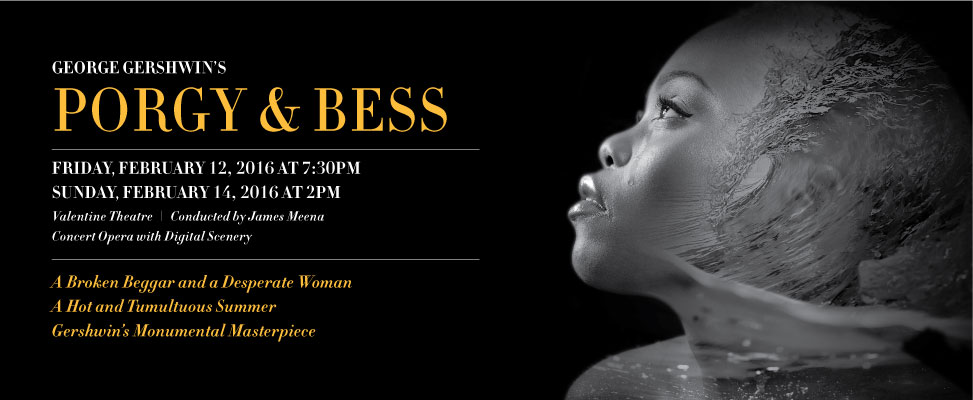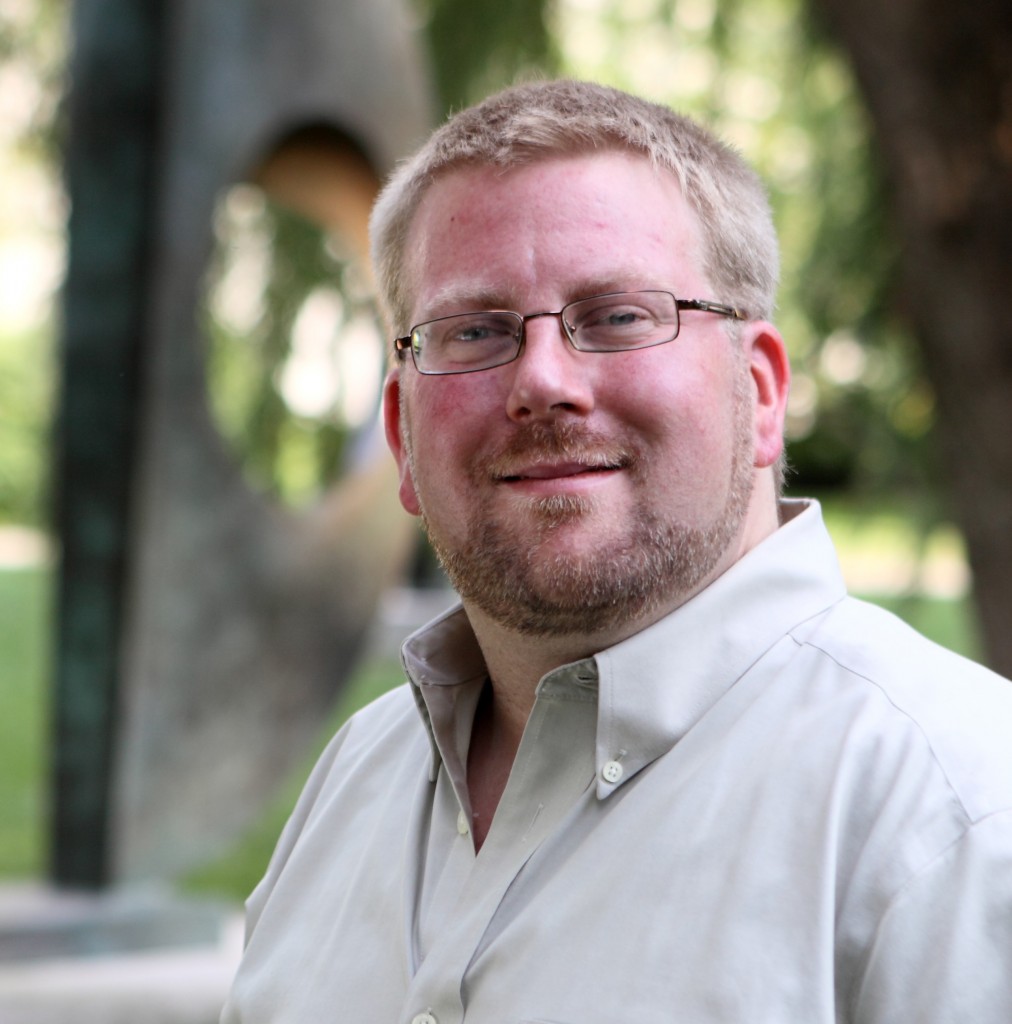BGSU’s Early Music Ensemble, under the direction of Dr. Arne Spohr, has been selected by Early Music America to perform at Early Music America’s Young Performers Festival in Berkeley, CA. This nationally recognized festival will be featuring top university early music ensembles from around the United States, including groups from Indiana University, University of Southern California, Case Western Reserve University, and Brigham Young University Idaho. All performances will take place at St. Mark’s Episcopal Church from June 8th – 10th as part of the Berkeley Music Festival.
Professors Papanikolaou and Merritt presenitng pre-performance talks at Toledo Opera’s production of Porgy and Bess
Eftychia Papanikolaou, Associate Professor of Musicology, and Myra Merritt, Professor of Voice, will present two pre-performance talks at Toledo Opera’s production of George Gershwin’s Porgy and Bess, Friday, February 12 at 6:30 p.m. and Sunday, February 14 at 1 p.m. in the Grand Lobby of the Valentine Theatre.
For more information please visit:
Steinway Artist headlines Dubois Piano Festival
BOWLING GREEN, O. – Bowling Green State University will host American pianist and Steinway Artist Spencer Myer for the annual David D. Dubois Piano Festival and Competition, Feb. 12-14.
Lauded for “superb playing” and “poised, alert musicianship” by the Boston Globe, Myer is considered one of the most respected and sought-after pianists on today’s concert stages. During his visit to BGSU, Myers will sit on a panel of judges for the Dubois piano competition; work with piano students during a master class, and present a community concert at 8 p.m. on Feb. 13 in Kobacker Hall, Moore Musical Arts Center.
His performance will include pieces by Mozart, Schumann, Ravel and Bolcom.
Myer’s orchestral, recital and chamber music performances have been heard throughout the country, Canada, Europe, Africa and Asia. He has been soloist with, among many others, The Cleveland Orchestra; Boise, Dayton and Louisiana philharmonic orchestras; Pro Art Chamber Orchestra of Boston; The Park Avenue Chamber Symphony; Mexico’s Orquesta Filarmónica de Jalisco; South Africa’s Cape Town and Johannesburg philharmonic orchestras, and Beijing’s China National Symphony Orchestra. He has collaborated with such conductors as Leslie B. Dunner, Bernhard Gueller, Jacques Lacombe, Jahja Ling, Timothy Muffitt, Maurice Peress, Kevin Rhodes, Matthew Savery, Klauspeter Seibel, Steven Smith, Arjan Tien and Victor Yampolsky. In May 2005, his recital/orchestral tour of South Africa included a performance of the five piano concerti of Beethoven with the Chamber Orchestra of South Africa, followed by return orchestra and recital tours in 2010 and 2012.
His master class for BGSU piano students will be 2:30-4:30 p.m. on Feb. 12 in Bryan Recital Hall. The class is free and open to the public.
Twenty-six competitors will be invited to the Dubois competition semifinal round, which is Feb. 13 from 10 a.m. to 5 p.m. in Kobacker Hall, with the finalists announced at 5:30 p.m. The competition finals are Feb. 14 from 9 a.m. to noon in Kobacker Hall. Winners will be announced at 12:30 p.m.
Tickets for the public performance on Feb. 13 are $10 for adults, $5 for children and free for BGSU music students with ID. Tickets are available online at bgsu.edu/arts, by calling the Arts Box Office at 419-372-8171, or visiting the arts ticket office in the Wolfe Center for the Arts.
The Dubois Piano Festival and Competition is named for Dr. David D. Dubois, an internationally recognized consultant, author and speaker who had a love of music and a passion for piano and organ performance. In 2008, after reviewing proposals from major music schools around the nation, the David D. Dubois Trust established the competition at BGSU to enhance the piano program in the College of Musical Arts. The competition supports student pianists by providing scholarships for high school students to attend BGSU, encouraging undergraduate students to develop innovative programming ideas for outreach projects and supporting current piano students to participate in music festivals around the world.
For more information visit bgsu.edu/dubois.
‘ELOQUENTIA’ BY SAENZ GIVES VOICE TO SOLO TRUMPET
–BGSU Marketing and Communications News
As its name suggests, the six compositions on trumpeter Charles Saenz’s new CD, “Eloquentia,” share a certain quality of eloquence. Recently released by Beauport Classical, the pieces for solo trumpet and piano “require the musician to understand the intention of each composer and their individual sense of the instrument,” said Saenz, an associate professor of trumpet at BGSU and coordinator of the brass/percussion area.
Although his solo performing repertoire is quite eclectic, Saenz said he has an affinity for these works, several of which are influenced by the Paris Conservatory style of writing, which places great value upon musicianship. The pieces he has chosen — by turns pensive, ebullient, sultry, even worshipful — show his ability with the trumpet’s expressive voice.
“The works on this CD are stunningly performed by a master soloist,” said George Novak, associate professor emeritus and a former colleague on the BGSU trumpet faculty.
“Charles Saenz is the consummate musician,” agreed James Ackley, professor of trumpet at the University of South Carolina, who was the associate producer of the CD. “He takes the time necessary to hone his craft, to delve into the world of the non-absolutes of music making, and comes out with a refined and exciting product every time. His new CD is like that. He takes a few pieces that are not performed often and crafts them into a fine display of music making and trumpet playing, intriguing to amateurs and professionals alike.”
Local audiences can hear Saenz in recital on Feb. 3 in Bryan Recital Hall at the Moore Musical Arts Center. The performance begins at 8 p.m. and is free.
Although “Eloquentia” is Saenz’s first solo CD, its six pieces are some that he and longtime collaborative pianist Solungga Liu, music performance studies, have played numerous times throughout the world, from Inner Mongolia to Europe to Brazil and all across the United States. They showcase Liu’s powerful playing and technique and the rapport they have developed together.
“Dr. Liu aptly performs along Charles to create a symbiotic sound palette of colors and nuances — something very difficult to achieve. Their music communication is at an extremely high level,” Ackley said.
Besides being Saenz’s first solo CD, “Eloquentia” represents several other “firsts”: “Variations” by Henri Challan and “Trois Mouvements” by André Waignein are recorded for the first time. “Concertino, Opus 41,” by Joseph Jongen, has previously only been recorded with trumpet and organ. All three were introduced to Saenz by Novak, and have become favorites of Saenz’s.
Another first is “Concerto for Trumpet” by Charles Chaynes, recorded for the first time with the composer’s piano reduction.
“This is something of a signature piece for me,” Saenz said. “It’s a pleasure for me to present my interpretation of this piece in that format. I hope it will serve as a good reference for others.”
He has been studying, performing and teaching the concerto for 20 years. “I grew up listening to the superb recording of it by Maurice André and much later became familiar with the recording by Eric Aubier upon its re-issue on compact disc,” he writes in the liner notes.
The recording opens with “Sonatina” by the Czech composer Bohuslav Martinů, a rousing work that Saenz feels is an homage to his national heritage, albeit it a challenging one for the musician.
“I find the final hymn-like statement to be one of the most difficult passages to perform both fluidly and with strength and character,” Saenz said.
The CD concludes with an “exclamation point” in the long glissando that caps off “In the Style of Albéniz,” by Rodion Shchedrin. The short piece begins energetically, soon to turn languid, almost jazz-inflected, with overtones of a Spanish dance, and then ending with a bold toss of the head.
In addition to teaching at BGSU, Saenz is a member of the Tower Brass Quintet, and appears on the group’s latest CD, “Road Trip,” released in May 2015. A frequent performer and recitalist, he has won awards and accolades for this playing, both here and abroad.
“Eloquentia” is available on CD Baby, iTunes and other websites as well as from Beauport Classical.
Another BGSU collaborator also contributed to the production of the CD. The striking photos on the jacket were taken by BGSU doctor of musical arts student Michiko Saiki.
Professor Tim Cloeter presents at conferences in Indiana and Michigan
On January 15, Tim Cloeter contributed to the Indiana Music Educators Association Conference with his presentation “Parlez-vous IPA? Tips and Tools for Great Choral Diction.” Modelling an effective and efficient method for teaching the International Phonetic Alphabet and for coaching singer’s diction, Cloeter provided insight, curricular materials, on-line and print resource evaluations, and encouragement for the attendees of this practical session.
On Saturday, January 23, at 10:00 a.m. in the Governors Room of the Amway Grand Plaza Hotel, Cloeter will present this session again as part of the Michigan Music Conference in Grand Rapids, MI.
Drew Edward Davis of Northwestern University to present lecture on Villancicos
THE BGSU MUSICOLOGY AND ETHNOMUSICOLOGY COLLOQUIUM SERIES PRESENTS:
Drew Edward Davies (Northwestern University):
“Africa and Africans in 17th-Century Christmas Villancicos”
Friday, January 22, 3:30-5 PM, College of Musical Arts, 1002
Abstract: Relationships among music, race, and representation count among the most difficult issues facing the interpretation of villancicos from seventeenth-century New Spain, especially those for the Christmas season that tend to rhetorically express concepts of inversion through popularizing tropes drawn from the Spanish theater. Some Christmas villancicos portray stereotyped African personages who travel in groups to Bethlehem to adore the Christ child through dance and song. Such pieces tend to feature rhythms patterns seemingly evocative of popular musics and have been categorized into a subgenre referred to as the negrilla, guineo or villanccio de negro.
For decades, scholars following the Stevenson tradition have interpreted such villancicos as indicative of “ethnological impulses” or retentions of African musical practices. In fact, members of the performance community tend to assume a literal and direct relationship between villancicos de negro and the musical practices of enslaved or free African populations in New Spain, even though such pieces were composed specifically for cathedral ritual. However, this paper argues that villancicos de negro work at the allegorical rather than literal level and derive from contemporaneous European modes of representation, including the theater and visual art. They derive from the theatrical tradition of Lope de Vega, dramatize scenes from contemporaneous religious visual art, and construct simplified, stereotyped ethnic Others in order to underscore the themes of the universal church.
Drew Edward Davies, a music historian specializing in the Spanish world of the sixteenth through early nineteenth centuries, is Associate Professor of Musicology and Director of Graduate Music Studies at Northwestern University’s Bienen School of Music, as well as Academic Coordinator of the Seminario de Música en la Nueva España y el México Independiente in Mexico City.
For further information contact Dr. Arne Spohr (aspohr@bgsu.edu)


![BGSU Early Music Ensemble[2] (1)](https://blogs.bgsu.edu/cmanews/files/2016/02/BGSU-Early-Music-Ensemble2-1.jpg)


